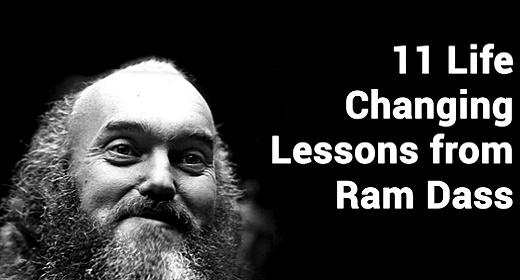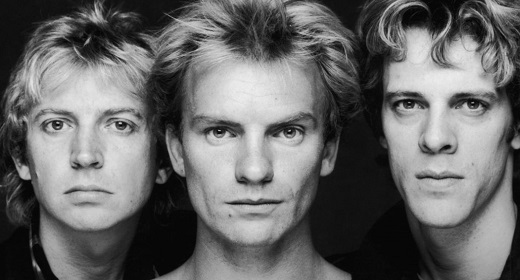by Alethea Luna: Spiritual bypassing is a very persistent shadow of spirituality, manifesting in many forms, often without being acknowledged. – R. Augustus

What comes to mind when you think of ‘spirituality’?
You might picture beautiful temples, ethereal instruments, golden Buddha’s, gardens and forests of paradise, the faces of enlightened masters, angels, mountain ranges, sunsets, or any number of other dazzling images.
We tend to associate spirituality with transcendental and heightened states of being that are invariably associated with the feelings of happiness, joy, deep inner peace, and contentment.
While all of this is true and wonderful, many of us become intoxicated, distracted, and ensnared by these highly attractive images of spirituality, avoiding the darker, painful, and more exhausting sides of such a path.
At its core, spiritual bypassing is like any other form of avoidance that rewards us with a false feeling of security and happiness, while undermining our deeper path of self-growth and transformation.
Spiritual Bypassing: An Enticing Form of Escapism

What you resist, persists. – C. G. Jung
For a long time, I struggled with understanding what ‘true’ spirituality looked and felt like.
I would look in the newspapers and find ads from kooky looking psychic women promoting their services to alluring internet courses dedicated to finding your ‘guardian angel.’
I would read books about “optimism” and articles about casting spells to attract love and prosperity. But amidst all of this searching, I somehow never felt a connection with any of these things. They felt somehow amiss, something, somehow, seemed intuitively off-center and “wrong” about them.
It was only in the past few years that I discovered why I had always felt this way about certain spiritual practices. The answer I found was that many practices falling under the guise of “spirituality” are actually forms of spiritual bypassing.
The term ‘spiritual bypassing’ was originally coined by psychologist John Welwood in 1984. As he explained in an interview,
Spiritual bypassing is a term I coined to describe a process I saw happening in the Buddhist community I was in, and also in myself. Although most of us were sincerely trying to work on ourselves, I noticed a widespread tendency to use spiritual ideas and practices to sidestep or avoid facing unresolved emotional issues, psychological wounds, and unfinished developmental tasks.
As we can see, spiritual bypassing is largely about avoiding or escaping from difficult life tasks. This leads us to form a clear definition of spiritual bypassing:
What is Spiritual Bypassing? (Definition)

To spiritually bypass is to use spirituality to avoid, suppress, or escape from uncomfortable issues in life.
These issues could be the loss of a loved one, a relationship breakup, family problems, childhood abuse, loneliness, low self-esteem, self-sabotaging behaviors, fear, mental or emotional health issues, or any other problems life presents.
To many people, spirituality becomes a sort of crutch used as a way of standing back up again in the face of life’s turmoil – and sometimes this is necessary. We all need support at some time or another in our lives. But the problem comes when spirituality is used as a drug for which we become dependent on in order to bypass the darker elements of our lives.
When spirituality is used as a defense mechanism to ward off the gremlins and demons of our existence, it actually becomes our greatest hindrance, preventing us from developing true courage, authenticity, and wholeness; qualities that refine our souls.
While the use of spirituality can provide us with a solid wall to hide behind, in doing so it traps us in an all-is-happy-and-perfect jail cell of illusions.
10 Types of Spiritual Bypassing

What gives light must endure burning. – V. Frankl (Man’s Search For Meaning)
The reality is that not everything in life is ‘love and light’ as is the slogan for many spiritual seekers.
Pursuing the light and living enlightened and deeply interconnected existences is also about setting yourself on fire.
It is about creating an inferno of your false beliefs, illusions and separating desires, ideals, and prejudices. It is about surrendering to the destruction of every limiting thing you ever thought and felt about yourself, other people, and the world.
Spirituality is not always pretty. In fact, oftentimes it is the most shattering, tumultuous, and testing experience we can go through in life.
But only once we emerge from the embers of our destruction can we be reborn – like phoenixes – into new lives of clarity and purity.
The truth is that there are many types of spiritual bypassing that we sometimes don’t recognize (or refuse to recognize) in life. I have listed ten of the most common types below:
I) The Optimistic Bypass
We’ve all come across people in life who love to laugh and smile, yet seem to be forcefully optimistic. “Focus on the positive!” “See the glass as half full!” “Don’t let a frown get you down!” are some of the catchcries of these people who tend to use optimism as a way of avoiding the more somber and troublesome realities of life. The optimistic bypass is often a side product of anger-phobia, or the inability to deal with negative emotions.
II) The Aggrandizement Bypass
This is a type of self-delusion that some spiritual seekers use as a way of masking their perceived deficiencies and insecurities. The aggrandizement bypass is adopted by those who seek to feel enlightened, superior or having reached higher planes of existence. It is sometimes used by self-proclaimed masters, leaders, spiritually awakened souls, and gurus.
III) The Victim Bypass
When one becomes a victim of their gifts, or of other people, this takes away the pressure of responsibility for shaping a satisfying life and taking responsibility for one’s happiness – such is the case with the Victim Bypass. This type of spiritual bypass is often used by spiritual seekers who believe they have extrasensory gifts of some kind, but due to their gifts they are unable to feel happy or healthy. Identifying as an Empath is sometimes a good example of this type of bypassing, as it can be interpreted as the fault of other people and their emotions for behaving in self-destructive and volatile ways. Other labels, like being a clairvoyant, indigo child, starseed, gifted healer, and so on, can often fall into the Victim Bypass trap.
IV) The Psychonaut Bypass
Many spiritual seekers explore the frontiers of the mind, the soul, and reality through the use of psychedelic drugs such as LSD, DMT, psilocybin mushrooms, mescaline, and other entheogens that expand the mind and perception of existence. While this is a fascinating way of exploring reality, entheogens, like any other drug, can sometimes be used as a way of escaping reality and avoiding committing to personal development and soulful refinement.
V) The Horoscope Bypass
When we frequently look outside of ourselves for help and guidance, as is with the case with Horoscopes and Psychics, we are failing to tap into our inner wellsprings of wisdom and strength and are allowing external predictions to control the outcome of our lives. The Horoscope Bypass is derived from fear and mistrust of ourselves, our inability to make decisions, and our inability to deal with anything tough that comes our way.
VI) The Saint Bypass
As children, we were conditioned to believe that a “spiritual person” is always kind, compassionate, and saintly. In adulthood, we continue to repeat this story to ourselves, and sadly, it can cause us tremendous suffering. The Saint Bypass is a reflection of extreme “black or white” thinking, promoting the underlying belief that spiritual people can’t have dark sides because that would make them “unspiritual.” This type of bypass is essentially avoidance of one’s Shadow Self (dark side) by overcompensating with the guise of a sweet, heavenly, exterior. Self-sacrifice is a major symptom of this type of bypassing.
VII) The Spirit Guide Bypass
In some spiritual traditions, it is a God who protects, in others an angel, an animal or an ascended being. No matter who the Spirit Guide is, the belief that they are there to “protect” us is pleasing to the mind but ultimately constricting to the soul. When we place our faith in another being’s power to ward off danger and keep us safe, we are committing a classic spiritual bypass: avoiding responsibility for ourselves and our lives and sidestepping the tough development of courage and resilience. We are not children, but when we think of ourselves as being so we mold our lives in such a way that we fail to develop strength of spiritual character. Spirit guides serve to teach us rather than to babysit us.
VIII) The Prayer Bypass
Similar to the Spirit Guide Bypass, the Prayer Bypass circumvents personal responsibility by putting faith in a higher being to solve all of our problems and issues. While praying can be a healthy practice, it can easily become limiting and misguided.
IX) The Guru Bypass
Often it is beneficial to follow a guru, shaman or spiritual teacher to learn and grow. However, becoming too attached to them can rapidly turn into another form of spiritual bypassing. The temptation to begin worshiping (knowingly or unknowingly) these teachers means that we eventually forget the purpose of listening to them: to integrate the essence of their teachings. By treating the words of a guru or master as the irrefutable truth and failing to think for ourselves, we are starved of true spiritual growth and transformation on our spiritual journeys.
X) The Finger-Pointing Bypass
On our spiritual quests, we begin to see through the lies, delusions, and crazy behaviors committed by our fellow human beings and this can make us angry, downhearted, and frustrated. However, when we get caught up in “everything that is wrong” with the outside world and other people, dedicating our lives to the self-righteous quest of finger-pointing, this can be another form of spiritual bypassing. Finger-pointing instills us with a false sense of righteousness, taking away our responsibility of looking inside and working on ourselves. At its roots, the Finger-Pointing bypass is sourced from fear and avoidance and is a powerful form of procrastination.
Certainly, there are many other forms of spiritual bypassing, but here I present the most common ones that are easily observable in everyday life.
How to Stop Spiritual Bypassing

Without deep and honest self-acceptance, the spiritual life rests on a dangerous psychological foundation and is nothing more than escape into a world of illusion. Humble self-knowledge is the most basic condition for any true spirituality. – John Monbourquette
The spiritual bypass is slippery, conniving, and is often disguised in robes of light. It can take a lot of ruthless self-honesty to see through the lies we’ve been conditioned to believe or have told ourselves.
With that being said, here are some methods you might like to use:
1. Cultivate an open-minded attitude
Before uncovering any forms of spiritual bypassing that have wheedled their way into your life, you need to be open. You need to be willing to be wrong, misguided, or totally off the mark. Without that willingness, you’re fooling yourself. There’s no point in even trying to call yourself out because you’re shooting yourself in the feet before you even begin.
So cultivate an open-minded and willing attitude. Remind yourself that it’s okay to be imperfect (we all are!). Most spiritual seekers – in fact, I’d dare say ALL seekers – go wrong at some point. And that’s nothing to be ashamed of. Embrace your flawed humanity and take a step toward greater expansion.
2. Examine the light and dark side of what you do
There is a light and dark side to everything. Even if you struggle to find what’s wrong with the spiritual activities or commitments you’re dedicated to right now, create hypothetical scenarios. For example, if you follow a spiritual teacher that you love and adore, create a hypothetical scenario where that teacher betrays your trust or does something against your ethics. What then?
Ask questions such as, “What could go wrong here?” “What aren’t I seeing?” “What’s the other side of this?” “In the past, how has this hurt someone?” “What warnings do people give about this activity?” “Is this hurting me in some way?” “Is this harming others in some way?” “How is this making me weak or dependant?” “Is there an opportunity for me to be taken advantage of here?”
Listening to your doubt is intelligent. Blind faith creates sheep, not a self-sovereign wolf. Dare to look at both sides of life. Honor the yin and yang of existence. Embrace the energy of both Shiva (the destroyer) and Shakti (the creator).
3. Dare to face your cognitive dissonance
Cognitive dissonance (CD) is a state of being where a person’s beliefs and behaviors do not align. CD also happens to people who hold two contradictory beliefs. The result is a sense of underlying uneasiness, anxiety, guilt, and like “something is not quite right.”
Those who carry a lot of cognitive dissonance tend to “explain away,” their behavior (or that of others) and live in denial. Facing the truth is too painful, so reality is avoided, and a false reality is created instead.
CD often happens to members of cults, but can also occur in the general spiritual community. For example, a person might experience CD when they follow the principle of compassionate non-harming but hit their children every time they get angry.
Other examples of CD include following a narcissistic spiritual teacher who says one thing and does the other, claiming to be a healer with special abilities but on some level knowing that it’s a pretense (and placebo), following a non-dual philosophy but being dogmatic about it, and so on.
Facing CD involves doing some shadow work and examining places and behaviors in your life that don’t add up. This is not about shaming yourself or being “more perfect,” but being honest and clearing away any self-delusion.
4. Ask others for their honest opinions
If you have any close friends or family members (who you have a healthy, respectful relationship with), talk to them about this topic. Ask them if they have noticed any spiritual bypassing tendencies within you. Brace yourself (and your ego) by taking a slow, soft, deep breath for their response. If at any point you feel overwhelmed with an emotion like anger or defensiveness, thank them and tell them that you need a minute or two to process what they’ve told you.
Feedback from other people (who genuinely care about our wellbeing) is invaluable. But make sure it’s from people you trust. Don’t go asking someone you have a complicated connection with to divulge your spiritual bypassing tendencies. Likely, they will use it as an opportunity to hurt you in a backhanded way. If you don’t have anyone you trust, you could try a spiritual counselor who is familiar with spiritual bypassing or even an online group of kindred spirits whom you trust.
5. Face and feel your pain
Why does spiritual bypassing occur? The answer is that it helps us to avoid facing painful emotions such as grief, shame, rage, hatred, and terror. Everyone wants to enjoy a sparkly spiritual high (that is ultimately short-lived) but no one wants to do the hard work of facing inner pain (that leads to longlasting joy, fulfillment, and peace).
Facing and feeling your pain is not simple. You will most likely require the help of a spiritual counselor or therapist – and ideally, they will be trauma-informed, as repressed pain stems from unresolved trauma.
This is not a fun prospect for most people, hence why they avoid this work and keep using spiritual bandaids. But the fact still remains: the pain needs to be dealt with sooner or later.
Practices that can help you face and feel your pain might include breathwork, bodywork (like yoga), meditation, mindfulness, journaling, art therapy, expressive dancing, catharsis, inner child work, and the list goes on.
***
To conclude, I’ll leave you with this beautiful spiritual bypassing quote by psychologist and author Elaine N. Aron:
Real redemption or enlightenment, as much as it can be achieved in this world, comes through hard work that does not skirt tough personal issues.
It can be a deeply unsettling, even terrifying experience to tear down the veneer of illusion from our lives and stare into the face of truth.
But the spiritual path is a process of destruction and purification. It requires you to set afire all hidden illusions and falsities so that life becomes clearer, deeper, expansive, liberating, and joyful.










































